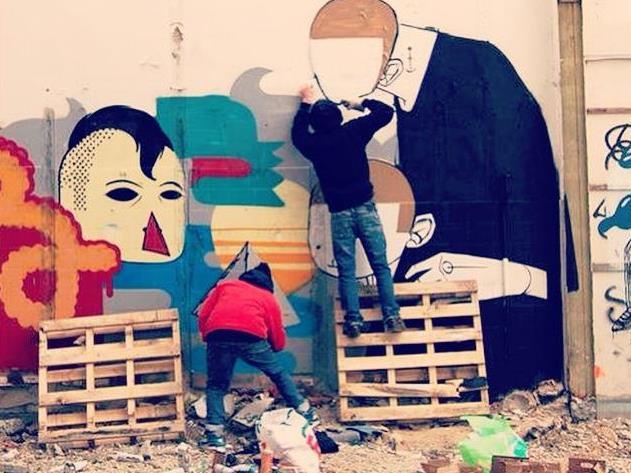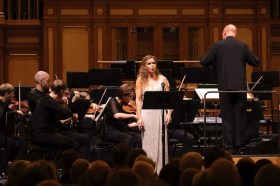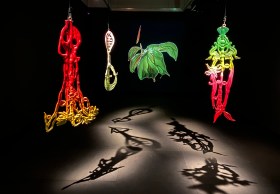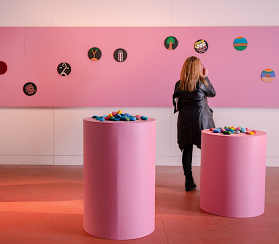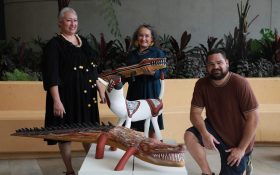SAMAG seminar: Don’t mention the “C Word”: Debate about Collaborations between Arts Organisations. Image: www.facebook.com
Making collaborations work is best likened to doing a dance with other creative people and organisations, according to the panel of speakers at this month’s SAMAG meeting in Sydney.
The dance metaphor was one that the panel kept returning to as they were asked to shed light on their collaborative process, the complications and potential conflicts; and their yet to be fulfilled ambitions for future collaborations.
On the panel were John Kirkman, executive director, Information and Cultural Exchange Inc; Michael Cohen, creative producer, Sydney Harbour Foreshore Authority and Lily Shearer, Muruwaroi woman and creative producer, Moogahlin Performing Arts.
The seminar’s title: ‘Don’t Mention the C Word: Debate about Collaborations between Arts Organisations’, underlined that collaborations don’t always run according to plan.
When asked how he assesses whether to embark on a particular collaboration, Kirkman said: ‘I anticipate it will happen naturally but it doesn’t always happen naturally. Some of them are very, very difficult but I’m not frightened about it. I actually really enjoy it because you can have friction, you can have joy but it’s always a very useful process.’
He asks himself is it interesting both to him as a producer and also to the organisation and the people he works with. ‘Also why would we do it? What is the purpose? Who do you work with and why would you work with them?
If a collaboration does turn problematic he said: ‘You’ve just got to work your way through it but I think communication and clarity of idea and thought and communication really is core to the whole thing – and compromise.’
For Shearer any collaborative project starts with ‘a big yarn’ with her elders in Western Sydney. ‘We’ve always collaborated as a community. It’s not an individual world we come from. It’s just so different to western culture. I have a cultural foundation and if people don’t meet that cultural foundation I step back a little bit and suss it out a bit ‘
Cohen talked about the difference between individuals collaborating and collaborations between organisations. At an organisational level, ‘we can find that dance together but your marketing department might not support what you want to do…’
‘So I guess the spirit of a collaboration is a really important driver and then that person’s capacity within the organisation to push that vision is really a linchpin because if you can’t bring your marketing department around then my marketing department cannot work with it as it is then suddenly you’ve got a disjoint.’
The way collaborations were formalised varied too as a discussion about contracts highlighted. ‘With our organisations that we collaborate with we have more agreements and this is your responsibility and this is our responsibility,’ said Shearer. ‘I know it’s a contract but it sounds better if it’s called an agreement or an MOU.’
Kirkman described the formalisation as a ‘step-by-step’ process particularly for big collaborations, adding they don’t embark on a collaboration until there’s a contract in place so everyone is protected. ‘We begin really by establishing an MOU that sets down this is the project, this is who we are, this is who you are, this is how it might work, these are the common goals of it and then we move to a more formal contractual arrangement.
‘I really hate contracts where they say this is the contract, sign. I never do that. Our contracts are always open to negotiation. It is a dance of what suits you and what suits us and how do we actually get to commencement.’
Cohen, on the other hand, said in the case of an international project that became something of a political football the broad terms of engagement were agreed upon and the project well underway while the legal teams were still nutting out the nitty-gritty detail.
The importance of shared values between collaborating organisations came to the fore when the panel was asked whether they had ever rejected a potential collaborator or pulled out of a collaboration that was already underway.’
Kirkman talked about an approach from a hotel in Fairfield which was doing some interesting work with kids. ‘They wanted to put more poker machines into their venues and they wanted us to work with them I guess to give them more credibility.’
ICE knocked back the partnership because of the connection to gambling.
‘This is the terror of our work – particularly for a poor company like ours – sometimes there is money on offer and you are tempted by it and you really have to assess where it comes from.’
Another 12 months later it successfully gained funding via the Packer Family Foundation and Crown Resort Foundation. The difference was they wanted to put money into projects that were about community cultural development and helping kids who were ‘disenfranchised, demonised and marginalised’, said Kirkman, adding it was a very careful negotiation between the two organisations over the course of a year.
Shearer mentioned walking away from a project with another community organisation, after trying to educate them on the protocols of working with Aboriginal people. ‘In the end we said: “You just want to drain our brain and take all of our ideas and cultural knowledge and it’s inappropriate – sorry.”
‘The reality is that there are some places that that does happen and I encourage all my First Nation brothers and sisters to walk away.’
Another development that could make collaborations flounder was the departure of one of the key people behind the project.
Cohen said he worried about what would happen if he left his role before the completion of a project that brought a floating art installation to Darling Harbour at a total cost of $1.8m, which had been divided between a Scottish partner, a German partner and the SHFA. ‘I drove it from the get go,’ he said. ‘It does come down to a contract but also I don’t think any contract is going to save you if I had left the organisation in the middle of that.’
Kirkman agreed, saying: ‘I think it becomes a very dangerous time. While you can have MOUs and contracts it does come down to personal relationships and communication.’
He pointed to a project he worked on with the Australian Ballet when he was at Penrith. ‘In its full flight it was fantastic but when she [the project leader in Melbourne] left the whole thing changed. We continued the program but it was never the same.’
Shearer said she tries to work with the team not just one particular individual at an organisation in case that person leaves. ‘It does happen and if it does my philosophy is it’s not meant to be. That was the life of that project. It’s not meant to go on any longer.’
Visit SAMAG for future seminar event details
